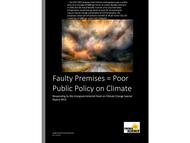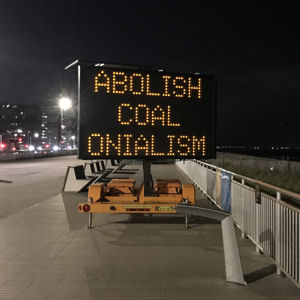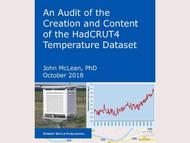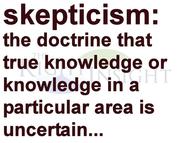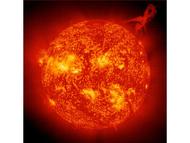The expression “without any evidence” is currently being used frequently by the US media, most frequently regarding assertions made by a certain political figure. Interestingly, other assertions by other political figures, unaccompanied by any evidence, are reported without the caveat “without any evidence” by the same media. This represents a not-so-subtle form of commentary.
Assertions by prominent members of the consensed climate science community are frequently made “without any evidence”, though I have not seen or heard the caveat used in this context. For example, virtually all the “scary scenarios” produced by members of the consensed climate science community are introduced to the media, and by the media to the public, without mention of the fact that such studies are produced “without any evidence”. Unverified models, estimated climate sensitivities, estimated forcings and estimated Representative Concentration Pathways are not evidence and do not produce evidence.
Three major hurricanes in 2017 and two in 2018 led to assertions by members of the consensed climate science community that these storms were made more likely, more powerful, more dangerous, and more destructive as a result of human-induced climate change. These assertions were all made “without any evidence”; and, in some cases, in the face of evidence to the contrary. Attribution studies based on unverified climate models are hardly evidence since the inputs are not evidence.
Media reports of massive human migration as the result of climate change are also made “without any evidence” of the reported causation, though there is certainly evidence of the migration. Similarly, reports regarding the imminent submersion of low-lying islands in the Pacific Ocean, such as the Maldives, and of coastal areas globally are attributed to human-induced climate change “without any evidence” of human causation; and, in the face of evidence that sea level rise has been occurring at a relatively constant rate since formal sea level measurement was instituted.
Reports of increased frequency and intensity of tornadoes, tropical cyclones, heavy rain events, flooding and drought are made, not only “without any evidence”, but in conflict with the available evidence. These reports are dutifully passed on and highlighted by the media, without resort to the “without any evidence” caveat.
Similarly, assertions that the global economy must transition from capitalism to some other economic structure, such as global socialism, are made and accepted by the media “without any evidence” that such a transition would be effective; and, in the face of the universal failure of socialism to provide the benefits it has promised. The same is true of assertions that global wealth and income must be redistributed as part of the economic transition, also presented “without any evidence” that such redistribution would somehow “make it all better”.
Ultimately, assertions that avoiding a future climate catastrophe would require a transition to global governance are also made “without any evidence” that global governance is necessary, or that instituting global governance of some type would be sufficient to avoid the threatened climate catastrophe.
The willingness of the media to pass on a variety of assertions regarding climate “without any evidence” is certainly indicative of a lack of intellectual curiosity, as is the apparent willingness of those consuming the media output not to question its value.
 The Right Insight is looking for writers who are qualified in our content areas. Learn More...
The Right Insight is looking for writers who are qualified in our content areas. Learn More...
